Mark Sisson's Blog, page 232
February 15, 2016
Apply Now to Become a PRIMAL KITCHEN™ Brand Ambassador!
 Calling all PRIMAL KITCHEN™ enthusiasts! We’re hiring part-time employees in the following cities: Los Angeles, Seattle and New York City. If you meet the requirements from the list below, and you’re looking for part-time work with control over your schedule, please apply by filling out the application here and emailing a picture of yourself and your resume to sierra@primalkitchen.com.
Calling all PRIMAL KITCHEN™ enthusiasts! We’re hiring part-time employees in the following cities: Los Angeles, Seattle and New York City. If you meet the requirements from the list below, and you’re looking for part-time work with control over your schedule, please apply by filling out the application here and emailing a picture of yourself and your resume to sierra@primalkitchen.com.
Requirements:
You love hanging out in Whole Foods or your local natural grocery store
You have an outgoing personality and you’re incredibly charming and fun
You live a Primal lifestyle
You have a general understanding of why avocado oil is the best oil—and you’re not afraid to educate shoppers
You like to talk
You have wheels
You live in Los Angeles, Seattle or New York City
You have a smartphone (for recording information from your demo)
Are you ready to be a brand ambassador? Apply here.




February 14, 2016
Weekend Link Love – Edition 387
 I’ll be giving a talk on food and recovery from addiction at the Recover 2.0 Online Conference. Sign up! It’s free, runs February 17-21, and features dozens of recovery experts.
I’ll be giving a talk on food and recovery from addiction at the Recover 2.0 Online Conference. Sign up! It’s free, runs February 17-21, and features dozens of recovery experts.
Listen to my chat with Ben Greenfield on chronic cardio, fat for fuel, and Primal Endurance.
Research of the Week
Bitter rivals LDL and fish oil combine to fight liver cancer (in the lab).
A single concussion increases the risk of suicide.
Scientists have discovered neural pathways that react uniquely and exclusively to music.
If a bear eats you, there’s a 50% chance it was your fault.
Just 14 days of bed rest induces robust atrophy of skeletal muscle in middle-aged adults.
Industrial-scale fish fermentation goes back at least 9000 years (to the south of Sweden).
New Primal Blueprint Podcasts

Episode 106: Bethany Hamilton: Host Elle Russ hangs out with Bethany Hamilton, who, after losing an arm to a tiger shark at age 13, went on to become a national surfing champion at age 14. She’s a mother, a speaker, and, yes, a surfer who learned to channel what was by most accounts a terrible tragedy into something beautiful and uplifting.
Each week, select Mark’s Daily Apple blog posts are prepared as Primal Blueprint Podcasts. Need to catch up on reading, but don’t have the time? Prefer to listen to articles while on the go? Check out the new blog post podcasts below, and subscribe to the Primal Blueprint Podcast here so you never miss an episode.
Nootropics: Brain Enhancers, Smart Drugs, or Empty Hype?
Should You Favor Time or Money?
How to Create Your Own Active Workstation
Interesting Blog Posts
Ghosts within us: how human evolution is more muddy delta than branching tree.
This is not satire.
Media, Schmedia
Is war innate? Take one, take two.
Will the new dietary guidelines just make us even fatter?
Everything Else
Are Australian birds of prey spreading fire to scare tasty critters from their hiding places?
Hmm. Apologies to any pug owners.
More reasons to avoid heart disease.
The UAE gets a .
How to choose, use, and slice ginger.
Could mushroom-based biopesticides replace synthetic ones?
Recipe Corner
Salsa verde slow cooker chicken: because chicken breasts can get boring.
These Indian lamb shanks may not be the most authentic, but they’re good.
Time Capsule
One year ago (Feb 16 – Feb 22)
6 Foreign Health Concepts From Around the Globe – What are other people doing that you may be missing?
Why is Regaining Weight So Common? – Weight loss is pretty easy. Keeping it off is hard. Why?
Comment of the Week
Great, I always start the day with some cups of coffee, krill oil, and a pipe or two of tobacco. Now, if only I could remember why I do this
– You do read this blog, though, so the nootropics are probably working.




February 13, 2016
Vietnamese Short Rib Stew
 There are many variations of Vietnamese beef stew, but what they all have in common are intensely aromatic herbs and spices. Star anise, cinnamon, lemongrass, cilantro, mint, basil…these ingredients turn beef stew into a vibrant meal, rather than a bland, beige bowl of meat.
There are many variations of Vietnamese beef stew, but what they all have in common are intensely aromatic herbs and spices. Star anise, cinnamon, lemongrass, cilantro, mint, basil…these ingredients turn beef stew into a vibrant meal, rather than a bland, beige bowl of meat.
Those herbs and spices don’t just smell good, though. There’s a reason herbs and spices have a spot at the top of the Primal Blueprint food pyramid.
Herbs and spices are full of antioxidants, health benefits and medicinal qualities.
Throw in some gelatin-rich short ribs, and this stew is about as nourishing as a meal can get.
Adding even more flavor and aroma, the ingredient list continues with ginger, garlic, fish sauce, and in this Primal version, coconut aminos. When this stew is simmering on your stove, even your neighbors across the street are going to smell it cooking. And they’re going to be jealous.
Servings: 4 to 6
Time in the Kitchen: 30 minutes, plus 2 to 3 hours to simmer
Ingredients:
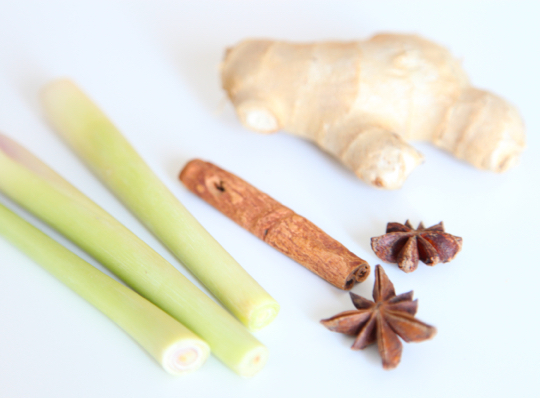
2 pounds bone-in beef short ribs* (900 g)
1 tablespoon lard or coconut oil (15 ml)
1 yellow onion, finely chopped
4 garlic cloves, finely chopped
3 tablespoons tomato paste (45 ml)
4 cups beef stock (or enough to just cover the short ribs) (950 ml)
2 tablespoons coconut aminos (30 ml)
2 tablespoons fish sauce (30 ml)
3 3-inch/7.6 cm pieces of lemongrass, smashed with the flat side of a knife or a meat tenderizer
2 star anise
1 cinnamon stick
1-inch/2.5 cm piece ginger, peeled and grated
2 carrots, peeled and cut into 1-inch pieces
1 daikon radish, peeled and cut into 1-inch/2.5 cm pieces
*This recipe can also be made with boneless beef stew meat
Instructions:
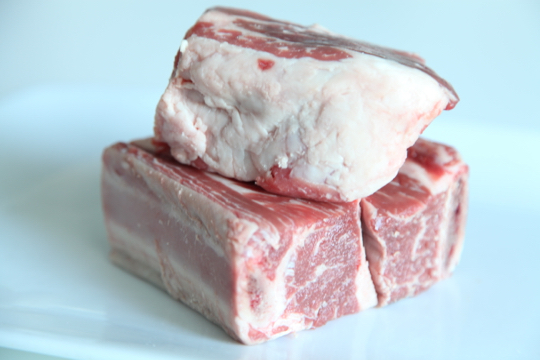
Season meat with salt and pepper. Heat lard in a wide Dutch oven or pot over medium-high heat. Add the short ribs in small batches, brown them on all sides. Transfer to a plate.
Decrease heat to medium and add onion. Cook until soft and brown, 8 minutes. Add garlic and tomato paste; cook for about 1 minute, stirring.
Add beef stock, coconut aminos, fish sauce, lemongrass, star anise, cinnamon and ginger.
Simmer with a lid for 2 to 3 hours or until meat is so tender that it easily falls from the bone. In the last 20 minutes of cooking, add the carrot and daikon radish to the pot.
The stew can be eaten immediately, but it also re-heats really well over the next few days.
Use coconut aminos, fish sauce, hot chiles, fresh lime, and fresh herbs like mint, Thai basil and cilantro to add more flavor to the finished stew.





February 12, 2016
60 Pounds Gone: How I Reclaimed My Life by Going Primal
It’s Friday, everyone! And that means another Primal Blueprint Real Life Story from a Mark’s Daily Apple reader. If you have your own success story and would like to share it with me and the Mark’s Daily Apple community please contact me here. I’ll continue to publish these each Friday as long as they keep coming in. Thank you for reading!
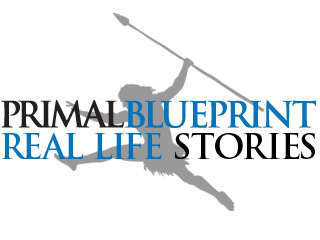 Throughout my high school experience I fluctuated in weight, but towards adulthood I began to gain weight slowly. At 19, I began to go to the gym regularly and had actually started taking over-the-counter fat burners from a well known health food store in my area. At the time, the fat burners contained ephedrine which was later discovered to be rather dangerous, but at the time they had helped me lose quite a bit of weight. However, I had started to have frequently occurring panic attacks where I felt like my heart was racing and that something was seriously wrong with me, so I stopped taking them and the panic attacks stopped.
Throughout my high school experience I fluctuated in weight, but towards adulthood I began to gain weight slowly. At 19, I began to go to the gym regularly and had actually started taking over-the-counter fat burners from a well known health food store in my area. At the time, the fat burners contained ephedrine which was later discovered to be rather dangerous, but at the time they had helped me lose quite a bit of weight. However, I had started to have frequently occurring panic attacks where I felt like my heart was racing and that something was seriously wrong with me, so I stopped taking them and the panic attacks stopped.
Unfortunately, when I was about 23, the panic attacks returned and no matter how many times I would go to the doctor for help, they would tell me, “It’s just anxiety.” Eventually I made it to the doctor while I was in the middle of one of these attacks and it was discovered that I was experiencing atrial fibrillation.
Over the next year I saw a couple different cardiologists and then went to a specialist who recommended a catheter ablation procedure. For this procedure, they would go in through the veins in my groin with catheters to try and find the faulty electrical signal in my atrium, and cauterize it to keep it from interfering. Over the past 10 years I’ve had five of these procedures and all of them have worked to an extent, but have failed to completely eliminate the problem.

Slowly from 2005 on, my weight continued to increase, topping out in 2012 at 240 lbs. I am 5’6″ with my shoes off and 240 lbs is a lot of weight to lug around. I was unhealthy both physically and mentally.

I had known about Mark’s Daily Apple for a year or so at this point. A motocross friend of mine named Steve had recently retired from the Marine Corps. Although he was fit his whole life, he said he never felt as healthy as he could have and even suffered from Chronic Fatigue Syndrome due to all of the years of hard training. He said making the change to a Primal lifestyle changed his life, and that interested me. I debated it for a while, and initially experimented with an 80/20 approach.
I can’t describe why or what changed in my life that made me finally just decide to go full bore, but in 2013 I made the leap. I would spend my breaks at work on Mark’s Daily Apple learning as much as I could. I bought Paleo cookbooks and began making home cooked Primal meals every Sunday, and would make enough to get me through the week.
In the beginning the weight seemed to be falling off so fast, with 30 lbs dropping off in the first six months easily. The more weight I lost, the better I felt and the more confident I became. It motivated me to keep going and I began to preach to everyone I knew about what I had learned.
 I have become so sensitive to how food affects my body. Every now and again, I will give myself a “cheat” meal and immediately I can feel the affects to my body and how I feel. Any time I consume grains or legumes I feel bloated and uncomfortable. I don’t crave what I used to crave. My days don’t revolve around meals and that provides me with a huge sense of freedom! I eat to fuel my body, when it needs it. I no longer obsess over what my next meal is going to be.
I have become so sensitive to how food affects my body. Every now and again, I will give myself a “cheat” meal and immediately I can feel the affects to my body and how I feel. Any time I consume grains or legumes I feel bloated and uncomfortable. I don’t crave what I used to crave. My days don’t revolve around meals and that provides me with a huge sense of freedom! I eat to fuel my body, when it needs it. I no longer obsess over what my next meal is going to be.
I am back to racing motocross which is what I love to do, and I have never ridden better. My fitness has come so far, and it continues to improve. I now weigh 178 lbs and although my weight loss has slowed, I am able to adjust my diet as needed to maintain. My next goal is to drop about 15 more lbs and improve my fitness even more. I recently purchased Primal Endurance and have been reading daily. I can’t wait for what the future holds. I thank you for changing my life and making this information available. Mark’s Daily Apple has improved my life immeasurably.

Steve
Like This Blog Post? Subscribe to the Mark's Daily Apple Newsletter and Get 10 eBooks and More Delivered to Your Inbox for FREE



February 11, 2016
Why Romantic Love Is Essential to Human Experience
 What? A post on romantic love? Has Sisson gone soft? No, I promise you’ll find no Hallmark material here. I’m the same empirically minded, rational guy you’ve come to know over the years. That said, the marketing forces of this week have inspired something in me. Not the desire to buy milk chocolate, but the drive to apply a Primal perspective to the topic of romantic love. As with most cultural phenomena, Valentine’s Day is part commercial hoopla and part genuine human inclination. So how do we honor the substance of the holiday while separating out the marketing static? Maybe a Primal lens (at least in the anthropological sense) doesn’t make for the most sentimental post about romantic love. But there’s plenty of authentic awe—and maybe some thought-provoking sense—to be had from the exercise. See if you agree…
What? A post on romantic love? Has Sisson gone soft? No, I promise you’ll find no Hallmark material here. I’m the same empirically minded, rational guy you’ve come to know over the years. That said, the marketing forces of this week have inspired something in me. Not the desire to buy milk chocolate, but the drive to apply a Primal perspective to the topic of romantic love. As with most cultural phenomena, Valentine’s Day is part commercial hoopla and part genuine human inclination. So how do we honor the substance of the holiday while separating out the marketing static? Maybe a Primal lens (at least in the anthropological sense) doesn’t make for the most sentimental post about romantic love. But there’s plenty of authentic awe—and maybe some thought-provoking sense—to be had from the exercise. See if you agree…
The Evolutionary Dance
First, when taking about romantic love from a Primal perspective, it makes sense to ask about its evolutionary payoff.
Sure, we can all understand the need for propagation of the species. If men and women didn’t reproduce, Grok and his kin would’ve died out long ago, and we wouldn’t be around to read this. But isn’t there a difference between mating and romance? Clearly. But, like all things in evolutionary terms, let’s be honest about what romance is: a means to an end. That shouldn’t, however, lead us to incorrectly characterize the kinds of experiences our Primal ancestors had when it came to romance.
People may assume Stone Age relationships contained none of the feeling or fidelity modern culture prides itself on today. Yet, the fact is, study of hunter-gatherer societies show that long-term pair bonding was as natural and essential then (if not more so) than it is today. Likewise, research reveals people likely practiced the same pattern of courtship as people generally follow today—“attention, recognition, dancing, synchronization,” to use one theorist’s amusing but astute description. Sure, Grok couldn’t take his sweetheart to the movies. But practices like dancing and gift-giving (whether extra fruit or whatever artisan creation he could come up with—personally made or bartered for) were as much part of the ritualistic game then as now.
And while there seems to be moderate agreement that the majority of actual marriages might have been arranged in most Pleistocene hunter-gatherer societies (likely to prevent interbreeding, encourage peace among different groups and make strategic alliances), there’s also evidence that men and women had the opportunity to share their own choices with the kin who made the arranging. And when politics beat out preference, there was still the shot of carrying on your chosen relationship outside of your arranged one. How’s that for accommodation? Plus, even if arranged marriages had been the norm in the late Pleistocene age, human instinct for individual mate selection secured its genetic foothold, a legacy most of us live and pair by today (arranged marriage or not).
So what would Grok be looking for in a mate? Most likely, our Primal ancestors would’ve been drawn to each other based on the traditional aspects of fitness—ones that suggested good health, survival capacity, sociability, and caregiving strength (e.g. symmetry, strength, intelligence, social skills, altruism, and compassion). Generally speaking, they would’ve stayed paired for personal as well as social reasons—maybe or maybe not for life, but in most cases at least for a number of years to ensure the bearing and mutual care-taking of their offspring.
But let’s not get too reductive. Evolutionary logic, as rational as it seems, doesn’t fully work by wholly reasonable means, as anyone who has been in love will tell you.
The Chemical Interplay
Human instincts, as we know, are genetic products that play out in our neurological and chemical responses. This is just as true with romantic love as anything else.
French poet Paul Valéry said, “Love is being stupid together,” and he was probably onto something there. Researchers have long studied the chemical picture of romantic love, revealing that feeling “in love” triggers the same brain centers as do addictive drugs, including the striatum and insula.
It’s interesting to note, however, that longer term love (as opposed to immediate attraction) activates the insula, which is in some regards the more complex region. Whereas the nucleas accumbens (part of the striatum) acts as a pleasure center, the insula assigns value to a particularly pleasurable source or activity to encourage our repetition and investment in it.
Recent experiments have deepened this understanding of this chemical interplay. Neuroscientist Kayo Takahashi and his colleagues have observed that people in the early stages of romantic relationships, when shown photos of their respective beloveds, experienced a dramatic surge of dopamine. Not only does this offer the assumed warm fuzzy feeling we often associate with the objects of our affection, but it does something else rather significant. It boosts the creation and securing of long-term memories.
Combine this pattern with the known triggering of oxytocin, another pleasurable hormonal response to social bonding (and within orgasm), and you have a cyclic pattern of reward and memory, which in essence conditions our partner preference. The result is a neurochemical recipe that encourages (but doesn’t of course determine) both ongoing affection and fidelity.
The Big Picture
What does this all mean for us free-thinking moderns?
Years ago in school I read (as I’m sure many of you did) the 18th Century novel, Gulliver’s Travels, the fictional tale of a ship surgeon’s misadventures. In one such incident, he lands on an island inhabited by two antithetical societies: the Yahoos (a crass and uncivilized kind of monkey species with no sense of morals, let alone pair bonds) and the dichotomous Houyhnhnms (horse-like creatures with impressive intellects but no genuine emotion). It made for decent reading but also a lasting reminder to value our own complexity, regardless of how inconvenient or confounding it can be at times.
Attraction and infatuation, the stuff of conventional “romance,” are fun. I don’t think anyone will argue against that. They’re natural human responses with a potent reward system ensuring we indulge them for sake of the species’ survival.
And, yet, when we bring all of our best humanity to bear, it can offer something beyond this advantage.
Not everyone desires this kind of affection or is prepared to give or receive it, of course. Maybe we don’t feel drawn that way or it’s not the right time in life to cultivate it. These are thoughtful and honest responses, which I think too few people conclude about themselves.
But for those who are personally ready and dispositionally wired for a romantic relationship, I think there’s more to it than we assume, particularly when we’re young.
There’s more than the emotional narcotic that makes us forget about everything else (in a wonderful and sometimes disorienting way). There’s more than the comfort of conforming to social norms or the sensible sharing of household duties. Rudimentary desire and dispassionate reason might bring people together, but seldom do either (or both together) offer enough to make a long-term partnership enjoyable. Those might seem to be the ultimate primal motivations, and they certainly had their part, but I’m guessing there was more to Grok’s humanity than those.
As the neuroscience suggests, romantic relationships aren’t just about immediate gratification, but about the construction of memory. Our chosen mates become hormonally and cognitively imprinted in us in ways few other kinds of relationships do. It’s why we can recall the small details of our partners from early courtship (even those we haven’t seen in decades). It’s why when we lose the one we’ve loved our entire lifetime, the most mundane reminders of their presence and routines (e.g. finding their glasses years later in the back of nightstand or catching the scent of their cologne) can send us into simultaneous euphoria and grief.
This is the dimension that Primal logic may not fully explain but human experience teaches. It’s why there’s no manual you can study that comes close to encompassing a life fully lived and how, no matter the cleverness of holiday marketing, the most romantic stories are those you’ll never find in a store.
Thanks for reading, everyone. Let me know your thoughts on this and all things Primal in the comment section. Enjoy your end to the week—and your holiday weekend if you’ll be celebrating.
Like This Blog Post? Subscribe to the Mark's Daily Apple Newsletter and Get 10 eBooks and More Delivered to Your Inbox for FREE



Why Romantic Love is Essential to Human Experience
 What? A post on romantic love? Has Sisson gone soft? No, I promise you’ll find no Hallmark material here. I’m the same empirically minded, rational guy you’ve come to know over the years. That said, the marketing forces of this week have inspired something in me. Not the desire to buy milk chocolate, but the drive to apply a Primal perspective to the topic of romantic love. As with most cultural phenomena, Valentine’s Day is part commercial hoopla and part genuine human inclination. So how do we honor the substance of the holiday while separating out the marketing static? Maybe a Primal lens (at least in the anthropological sense) doesn’t make for the most sentimental post about romantic love. But there’s plenty of authentic awe—and maybe some thought-provoking sense—to be had from the exercise. See if you agree…
What? A post on romantic love? Has Sisson gone soft? No, I promise you’ll find no Hallmark material here. I’m the same empirically minded, rational guy you’ve come to know over the years. That said, the marketing forces of this week have inspired something in me. Not the desire to buy milk chocolate, but the drive to apply a Primal perspective to the topic of romantic love. As with most cultural phenomena, Valentine’s Day is part commercial hoopla and part genuine human inclination. So how do we honor the substance of the holiday while separating out the marketing static? Maybe a Primal lens (at least in the anthropological sense) doesn’t make for the most sentimental post about romantic love. But there’s plenty of authentic awe—and maybe some thought-provoking sense—to be had from the exercise. See if you agree…
The Evolutionary Dance
First, when taking about romantic love from a Primal perspective, it makes sense to ask about its evolutionary payoff.
Sure, we can all understand the need for propagation of the species. If men and women didn’t reproduce, Grok and his kin would’ve died out long ago, and we wouldn’t be around to read this. But isn’t there a difference between mating and romance? Clearly. But, like all things in evolutionary terms, let’s be honest about what romance is: a means to an end. That shouldn’t, however, lead us to incorrectly characterize the kinds of experiences our Primal ancestors had when it came to romance.
People may assume Stone Age relationships contained none of the feeling or fidelity modern culture prides itself on today. Yet, the fact is, study of hunter-gatherer societies show that long-term pair bonding was as natural and essential then (if not more so) than it is today. Likewise, research reveals people likely practiced the same pattern of courtship as people generally follow today—“attention, recognition, dancing, synchronization,” to use one theorist’s amusing but astute description. Sure, Grok couldn’t take his sweetheart to the movies. But practices like dancing and gift-giving (whether extra fruit or whatever artisan creation he could come up with—personally made or bartered for) were as much part of the ritualistic game then as now.
And while there seems to be moderate agreement that the majority of actual marriages might have been arranged in most Pleistocene hunter-gatherer societies (likely to prevent interbreeding, encourage peace among different groups and make strategic alliances), there’s also evidence that men and women had the opportunity to share their own choices with the kin who made the arranging. And when politics beat out preference, there was still the shot of carrying on your chosen relationship outside of your arranged one. How’s that for accommodation? Plus, even if arranged marriages had been the norm in the late Pleistocene age, human instinct for individual mate selection secured its genetic foothold, a legacy most of us live and pair by today (arranged marriage or not).
So what would Grok be looking for in a mate? Most likely, our Primal ancestors would’ve been drawn to each other based on the traditional aspects of fitness—ones that suggested good health, survival capacity, sociability, and caregiving strength (e.g. symmetry, strength, intelligence, social skills, altruism, and compassion). Generally speaking, they would’ve stayed paired for personal as well as social reasons—maybe or maybe not for life, but in most cases at least for a number of years to ensure the bearing and mutual care-taking of their offspring.
But let’s not get too reductive. Evolutionary logic, as rational as it seems, doesn’t fully work by wholly reasonable means, as anyone who has been in love will tell you.
The Chemical Interplay
Human instincts, as we know, are genetic products that play out in our neurological and chemical responses. This is just as true with romantic love as anything else.
French poet Paul Valéry said, “Love is being stupid together,” and he was probably onto something there. Researchers have long studied the chemical picture of romantic love, revealing that feeling “in love” triggers the same brain centers as do addictive drugs, including the striatum and insula.
It’s interesting to note, however, that longer term love (as opposed to immediate attraction) activates the insula, which is in some regards the more complex region. Whereas the nucleas accumbens (part of the striatum) acts as a pleasure center, the insula assigns value to a particularly pleasurable source or activity to encourage our repetition and investment in it.
Recent experiments have deepened this understanding of this chemical interplay. Neuroscientist Kayo Takahashi and his colleagues have observed that people in the early stages of romantic relationships, when shown photos of their respective beloveds, experienced a dramatic surge of dopamine. Not only does this offer the assumed warm fuzzy feeling we often associate with the objects of our affection, but it does something else rather significant. It boosts the creation and securing of long-term memories.
Combine this pattern with the known triggering of oxytocin, another pleasurable hormonal response to social bonding (and within orgasm), and you have a cyclic pattern of reward and memory, which in essence conditions our partner preference. The result is a neurochemical recipe that encourages (but doesn’t of course determine) both ongoing affection and fidelity.
The Big Picture
What does this all mean for us free-thinking moderns?
Years ago in school I read (as I’m sure many of you did) the 18th Century novel, Gulliver’s Travels, the fictional tale of a ship surgeon’s misadventures. In one such incident, he lands on an island inhabited by two antithetical societies: the Yahoos (a crass and uncivilized kind of monkey species with no sense of morals, let alone pair bonds) and the dichotomous Houyhnhnms (horse-like creatures with impressive intellects but no genuine emotion). It made for decent reading but also a lasting reminder to value our own complexity, regardless of how inconvenient or confounding it can be at times.
Attraction and infatuation, the stuff of conventional “romance,” are fun. I don’t think anyone will argue against that. They’re natural human responses with a potent reward system ensuring we indulge them for sake of the species’ survival.
And, yet, when we bring all of our best humanity to bear, it can offer something beyond this advantage.
Not everyone desires this kind of affection or is prepared to give or receive it, of course. Maybe we don’t feel drawn that way or it’s not the right time in life to cultivate it. These are thoughtful and honest responses, which I think too few people conclude about themselves.
But for those who are personally ready and dispositionally wired for a romantic relationship, I think there’s more to it than we assume, particularly when we’re young.
There’s more than the emotional narcotic that makes us forget about everything else (in a wonderful and sometimes disorienting way). There’s more than the comfort of conforming to social norms or the sensible sharing of household duties. Rudimentary desire and dispassionate reason might bring people together, but seldom do either (or both together) offer enough to make a long-term partnership enjoyable. Those might seem to be the ultimate primal motivations, and they certainly had their part, but I’m guessing there was more to Grok’s humanity than those.
As the neuroscience suggests, romantic relationships aren’t just about immediate gratification, but about the construction of memory. Our chosen mates become hormonally and cognitively imprinted in us in ways few other kinds of relationships do. It’s why we can recall the small details of our partners from early courtship (even those we haven’t seen in decades). It’s why when we lose the one we’ve loved our entire lifetime, the most mundane reminders of their presence and routines (e.g. finding their glasses years later in the back of nightstand or catching the scent of their cologne) can send us into simultaneous euphoria and grief.
This is the dimension that Primal logic may not fully explain but human experience teaches. It’s why there’s no manual you can study that comes close to encompassing a life fully lived and how, no matter the cleverness of holiday marketing, the most romantic stories are those you’ll never find in a store.
Thanks for reading, everyone. Let me know your thoughts on this and all things Primal in the comment section. Enjoy your end to the week—and your holiday weekend if you’ll be celebrating.
Like This Blog Post? Subscribe to the Mark's Daily Apple Newsletter and Get 10 eBooks and More Delivered to Your Inbox for FREE



February 10, 2016
10 Reasons to Eat More Collagen
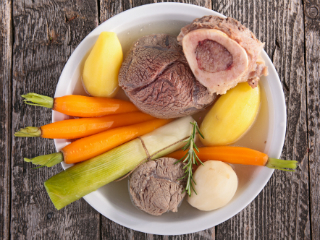 For years, the bodybuilding, protein-gorging community has maligned collagen for its inessentiality and lack of input into the muscle-protein synthesis process. From their perspective, it sort of makes sense. Why bother with “low quality” protein like gelatin/collagen when you can pound the whey, eat the meat, and focus on other sources of the essential amino acids directly involved in building muscle?
For years, the bodybuilding, protein-gorging community has maligned collagen for its inessentiality and lack of input into the muscle-protein synthesis process. From their perspective, it sort of makes sense. Why bother with “low quality” protein like gelatin/collagen when you can pound the whey, eat the meat, and focus on other sources of the essential amino acids directly involved in building muscle?
Except the research is showing that these “nonessential” proteins are actually pretty darn useful.
A while back, I suffered an Achilles injury during of one of my Ultimate Frisbee matches. In my attempt to speed recovery time, I did some research and started supplementing with collagen. The results, in my personal n=1 experiment, were pretty dramatic. Once I added collagen to the mix, my healing kicked into overdrive. As I’ve dug deeper into this topic to uncover the many benefits dietary collagen can bestow upon us, I’m convinced collagen/gelatin is an essential part of the human diet. And yes, even—or especially—bodybuilders, power lifters, and other athletes concerned with performance, muscles, and optimizing swoleness can benefit from eating more collagen. But why?
1. We don’t make enough glycine to cover our body’s needs
Most people view amino acids in one of two ways: either they’re essential, meaning our bodies can’t synthesize them, or they’re inessential, meaning our bodies can. In actuality, there’s a third category: amino acids can be conditionally essential. Glycine, the primary amino acid in collagen, is synthesized from the amino acid serine to the tune of 3 grams per day. That’s not nearly enough. The human body requires at least 10 grams per day for basic metabolic processes, so we’re looking at an average daily deficit of 7 grams that we need to make up for through diet. Even more in disease states that disrupt glycine synthesis, like rheumatoid arthritis.
2. We’re wasting half the animal otherwise
The average cow is half muscle meat and half “other stuff.” Most people only eat the muscle meat and ignore the other stuff, which includes bones, connective tissue, cartilage, tendons, and other collagenous material. The other stuff ends up in pet food or used by other industries, but we could be eating it, getting healthier, and wasting less food in the process.
3. It balances out our meat intake
The more meat we eat, the more glycine our bodies utilize. This has been shown in rodent studies. Rats on high methionine (the amino acid most prevalent in muscle meat) diets die earlier than rats on low methionine diets. Keeping the methionine high while adding glycine, though, abolishes the reduced longevity. In human terms, this would be like continuing to eat muscle meat while adding in collagen or gelatinous meats. If the same holds true in humans, it means low-animal protein diets aren’t necessary to live longer, healthy lives. It means all those atrophied calorie restriction folks are doing it wrong. They could be eating meat—deriving the “short-term” benefits like increased lean mass, better athletic performance, and lower fat mass—and living long, healthy lives.
4. It might explain the “meat-disease” links
We like meat around here. We make no bones about it. And whenever a questionable observation study comes out claiming a link between meat and disease or death, we’re quick to show why it’s spurious or explained by variables the researchers failed to control for. But there’s another possibility: what if there is a connection between meat and certain diseases, like diabetes, and eating collagen is the key to severing that connection? In one recent study, the relationship between red meat and diabetes was abolished after controlling for low-glycine status. People with low glycine levels and high meat intakes were more likely to have diabetes; people with higher glycine levels could have higher meat intakes without any issues. In another study, low circulating levels of glycine predicted diabetes risk. It may very well be that the way most people eat meat in developed countries—eating chicken breasts over chicken wings and skin, lean steak over oxtails and shanks, muscle meat over bones, skin, and tendons—is unhealthy. Increasing your collagen, then, could balance out the meat intake.
5. It’s protein-sparing
Eating gelatin reduces the amount of muscle meat required to maintain muscle mass and perform your regular protein-related physiological functions. We don’t need so much of the expensive muscle protein when we’re eating enough collagenous materials. Most recently, elderly men who supplemented with collagen experienced greater anabolic responses to resistance training than elderly men who didn’t take any collagen. Note: this was collagen, not whey, or beef, or eggs, or any of the other rich sources of essential amino acids normally associated with muscle building. The increased dietary collagen was likely sparing the amount of “meat protein” used for daily maintenance and allowing its greater utilization for putting on lean muscle mass.
6. It improves sleep quality
One of my go-to “sleep hacks” is a big mug of bone broth about an hour before bed. It always knocks me out (in a good, non-narcotic way). And according to research, I’m not making this up or suffering from placebo. Human studies show that 3 grams of glycine taken before bed increases the quality of your sleep and reduces daytime sleepiness following sleep restriction.
7. It’s good for your joints
Remember that study showing how we need at least 10 grams of glycine each day for basic metabolic processes? One of those processes is the maintenance of the collagen in our body (the most abundant protein we carry, in fact). Collagen is everywhere through the human body, but it concentrates where joints meet and in the connective tissue binding us together. Those 10 grams of glycine is just for maintenance, not repair after catastrophic injury or recovery from intense loading. If you’re a heavy exerciser or are recovering from joint damage, supplementary collagen/gelatin/glycine will improve your resilience. One recent study found that a glcyine-rich diet made the Achilles’ tendon stronger and more resistant to rupture in rats, increasing tendon remodeling in response to injury faster than rats on a low-glcyine diet. A 2008 human study found that giving collagen hydrolysate supplements reduced pain in athletes complaining of joint pain.
8. It’s good for your skin
Your face is made of collagen. Your underarms are made of collagen. All the problematic swathes of skin liable to descend into wrinkly parchment are made of collagen. Collagen provides body and bounce. Just like it keeps the integrity in a bowl of jello, collagen keeps skin buoyant. And when collagen levels in the skin drop, the skin droops. The studies bear this out:
In middle-aged Korean women, a collagen supplement (6 g per day) reduced skin cracking and increased serum collagen.
Collagen peptides reduced wrinkling.
Collagen improved skin elasticity.
And since the apparent age of your face is actually a good barometer of your longevity, increasing collagen consumption to maintain skin appearance may be way more than just a cosmetic intervention.
9. It improves wound healing
Makes sense, right? Our collagen requirements increase during wound healing (which involves laying down collagen to build new tissue), so a little extra in the diet can make a big difference. In patients recovering from ulcers, collagen supplementation sped up healing time. Some clinicians are even packing collagen directly into the wound dressing to speed up the healing process.
10. It enhances cooking
The foundation of many classic cuisines and dishes is gelatin-rich bone and meat broth. Soups, sauces, demi glace, curries, Jell-o Americana Egg Custard. Go to a high-end French restaurant and everything you eat—except maybe the dessert—will involve gelatin-rich stock. I’ve even used straight gelatin powder to enrich sauces and curries.
Okay, okay. Sisson, I’m convinced. How do I get more collagen in my life? Here are a few ways.
Eat gelatinous meats. Many meats are low in collagen, but not all. Shanks, necks, feet, cheeks, oxtails, ribs, and all the other cuts that take extra time in the slow cooker to become tender are high in collagen. Favor these meats instead of yet another chicken breast.
Clean your bones. You know those crunchy caps at the end of chicken drumsticks? That’s cartilage, a big whopping dose of concentrated collagen. Eat it.
Eat skin. Skin is almost pure collagen. Eat it, and eat the discarded skin from finicky dinner mates.
Drink bone broth. Bone broth is trendy right now, and for good reason; it’s a rich source of collagen. Bone broth is simple to make but takes valuable time. If you can’t do it yourself, there’s a budding bone broth industry more than willing to ship frozen or shelf-stable broth to your door.
Use powdered gelatin. I always keep a can around. You don’t have to make jello with it. My favorite use is a quick 10 minute Thai curry: toast the spices and curry powder in coconut oil, add coconut milk, reduce, and whisk in a couple tablespoons of gelatin powder to obtain the desired texture and mouth feel. Delicious and a huge dose of collagen.
Use collagen hydrolysate. This contains the same amino acids as gelatin, but mixes more easily into liquids of any temperature (gelatin needs hot water to dissolve).
Eat Primal Kitchen bars. Each of my new Primal Kitchen Dark Chocolate Almond bars contains 8 grams of pure collagen from grass-fed cows (it’s what gives the bar its unctuous chewiness). With collagen being about 33% glycine, that’s over 2.6 grams of glycine in each one—almost enough to satisfy those 3 grams used to improve sleep quality and reduce joint pain in studies.
Eating more collagen is a worthwhile, delicious undertaking, and after today’s post, you should have all the tools and reasons you need to start doing it.
Thanks for reading, folks. Take care!
Like This Blog Post? Subscribe to the Mark's Daily Apple Newsletter and Get 10 eBooks and More Delivered to Your Inbox for FREE



February 9, 2016
Nootropics: Brain Enhancers, Smart Drugs, or Empty Hype?
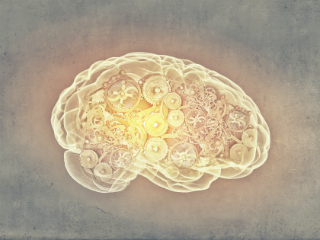 Hang around on nootropic forums where fans and users congregate and you’ll come away with the notion that you’re missing out on a leg up if you’re not taking the latest and greatest nootropic supplement. Nootropics promise vague benefits to “cognition” and “performance,” but what’s really happening? Do nootropics actually work as advertised? Some of them do, absolutely. But others, maybe not so much.
Hang around on nootropic forums where fans and users congregate and you’ll come away with the notion that you’re missing out on a leg up if you’re not taking the latest and greatest nootropic supplement. Nootropics promise vague benefits to “cognition” and “performance,” but what’s really happening? Do nootropics actually work as advertised? Some of them do, absolutely. But others, maybe not so much.
Today’s post will deal solely with compounds, foods, and supplements available over the counter in most countries. Other supplements may have promise, like modafinil and micro-dosed psychedelics, but are unavailable through standard legal means. Plus, their potential benefits may come with some dramatic side effects. So I won’t discuss those. Not today, at least. Instead, I’ll talk about some of the more commonly referred to ways you may (or may not) be able to boost your brain power—some of which are clearly primal approved.
Bacopa monnieri
For thousands of years, Ayurvedic healers have been prescribing bacopa for improved mental health and cognition. The modern evidence suggests they were on to something. Whether you’re a senior citizen suffering from memory impairment, an older person who’s otherwise healthy, or even a young adult with no complaints, bacopa monnieri can increase your focus and working memory.
One downside is the tendency of bacopa to accumulate heavy metals. If you’re going to try bacopa, stick with a company that releases its heavy metal test results. Bacognize bacopa seems to have the lowest levels of heavy metals; Swanson’s uses Bacognize in their bacopa product.
Blueberries
Yes, they’re not just delicious. They don’t just go great with yogurt. There’s decent evidence they and their extracts can improve cognitive function, particularly memory.
In older adults with the first inklings of negative changes to their memory, wild blueberry juice improved it.
In 8-10 year olds, a wild blueberry juice drink improved performance on a working memory test.
There seems to be a qualitative difference between the smaller, tarter, bluer wild blueberries and the larger, sweeter, less vibrant blueberries. The wild frozen blueberries from Trader Joe’s turn my entire mouth blue; the frozen organic blueberries from Whole Foods do not. As most of the proposed cognitive benefits come from the polyphenol content, which corresponds to the blueberry pigment, I suspect “makes your mouth turn blue” is a good barometer for nootropic action.
Choline
An entire class of nootropics are the cholinergics: compounds that increase acetylcholine in the brain. In case you’re unaware, acetylcholine acts as a neurotransmitter/neuromodulator that changes how information is processed in the brain. Many nootropics operate under the assumption that increasing available acetylcholine in the brain increases cognitive potential, memory, and performance. This makes sense, particularly if you don’t eat enough choline-rich foods (eggs, liver).
Alpha-GPC is a popular supplementary choline source. Good ol’ egg yolks should work well, too. I notice a distinct (if unscientific) boost to my cognition when I drink a Primal Egg coffee with a few yolks blended in.
Coffee
The original nootropic, coffee remains one of the best. It tastes great. It’s part of the morning ritual, which confers its own advantages (you get up, brew the coffee, and set the tenor for the rest of the day). And it’s a great cognitive enhancer for various populations, such as dialysis patients, extraverts, and infrequent consumers of caffeine.
It may be that once they’re acclimated/addicted, coffee/caffeine just brings a person up to baseline. But that does count for something, as being below baseline is unequivocally bad for performance.
Furthermore, coffee and caffeine consumption is consistently associated with lower rates of age-related cognitive decline. It’s not proven to be causal, but it probably won’t hurt.
Personally, my favorite part of drinking coffee is the burst of productive optimism it confers for an hour, hour and a half. That’s when I can start a project and make huge initial progress, think about and figure out a problem that’s been stumping me, or make headway against writer’s block. It’s also a great way to just come up with new ideas, to brainstorm. A short morning stroll while drinking my coffee is a once or twice weekly occurrence and usually produces something interesting. This quality is probably why the American revolution started in New England coffeehouses.
If coffee gives you the jitters, have some l-theanine (or green tea, the best source of it) alongside to smooth things out. L-theanine is also in Primal Calm, another good choice for better cognition if anxiety and stress are impeding you.
Creatine
Most of you don’t lack creatine in your diet. If you eat fish or meat, you’re probably obtaining it. But vegetarians and vegans and anyone else who eats very little meat obtain little to no dietary creatine. They can definitely benefit from creatine supplementation, which has been shown to improve memory in these populations. Older adult brains can also benefit. Simple, cheap, effective (and will probably boost performance in the gym, too).
Fish oil
Many evolutionary theorists think access to marine foods and marine fats helped spur the growth and complexification of the human brain. That may be why humans have historically gathered on coasts and, if living inland, traded for marine foods from coastal people. Okay, maybe we evolved on fish, but does it actually help living people with already developed brains? Turns out that it is important for in vivo cognition across various age groups.
Healthy young adults who take fish oil (750 mg DHA, 930 mg EPA) can experience improvements in working memory.
Fish oil supplementation can reduce age-related cognitive decline. Both Alzheimer’s disease and mild cognitive impairment are associated with altered DHA levels in the brain, suggesting a deficiency or misallocation. Certain genotypes may need more DHA as they age.
Extra fish oil can help kids with ADHD improve their focus and reduce negative symptoms, especially in kids with generally low fish intake and deficient baseline omega-3 levels. They’re not the typical consumers of nootropics, but maybe the most deserving!
I don’t think drinking a double shot of fish oil every morning will do much for your cognitive performance. I do think correcting a deficiency will almost certainly improve the way your brain works, though.
Nicotine
Nicotine? Sisson, have you finally gone off the deep end? No. I’m talking about pure nicotine consumed sans-smoke and tar, or having to become one of those annoying-and-still-likely-bad-for-you vapers. The actual evidence for the safety of actual nicotine relative to tobacco is quite compelling. So too is the evidence for its cognitive benefits.
Nicotine improves cognition and memory in patients with mild cognitive impairment. It improves reaction time in the short term. Nicotine actually mimics acetylcholine and activates its receptors in the brain. Some scientists are even exploring this mechanism to improve symptoms in animal models of Parkinson’s disease.
Nicotine also acutely increases adrenaline in the brain, which may be partially responsible for the cognitive enhancement. This also means that nicotine should probably be treated as an occasional nootropic, a special occasion for quick bursts of creativity and output. You don’t want chronic adrenaline release.
I’m not suggesting you try nicotine. I’m definitely not suggesting you light up. It is addictive and the research vindicating it has been abused by the tobacco industry. But set aside biases and preconceived notions and the influence of conventional wisdom for just a moment and consider that nicotine may have been unjustly maligned and discarded.
Piracetam
Piracetam may be the most well-known of the nootropics, but there’s actually very little evidence it helps healthy people with healthy brains.
Older people will probably benefit from it, however. It seems to slow cognitive decline. In one study, while piracetam was unable to improve any specific biomarkers related to cognition, clinicians asked to rate either piracetam-takers or placebo-takers on an overall “global” evaluation (how does this patient compare to other similar patients?) rated piracetam-takers more highly.
Combining it with a source of choline may improve its action, as will higher doses (4800 mg/day) versus lower doses (2400 mg/day).
Other -acetams include oxiracetam (promising animal research but no human studies yet) and aniracetam (no human studies). They have large online followings but no solid research in humans as of now.
As I alluded to earlier, there are other potential nootropics that could very well improve the way your brain works, but they’re either of questionable legal status or have yet to undergo human testing. This area will continue to grow and I suspect I’ll be revisiting this topic in the future. For now, though, these are some of the more solid and safe nootropics that you can play around with right now and expect results. Or at the very least, fish burps, a blue tongue, and coffee breath.
Thanks for reading, folks. Do you have any go-to ways to get your mind running at full speed? Feel free to share your own routines in the comments section below.
Prefer listening to reading? Get an audio recording of this blog post, and subscribe to the Primal Blueprint Podcast on iTunes for instant access to all past, present and future episodes here.
Like This Blog Post? Subscribe to the Mark's Daily Apple Newsletter and Get 10 eBooks and More Delivered to Your Inbox for FREE



February 8, 2016
Dear Mark: How Many Sprints Per Week, How to Play and Train with Babies, and the Best Nighttime Snack
 For today’s Dear Mark, I’m answering three questions. First, how often can a person sprint safely and effectively? There are many factors to consider when determining the amount of sprinting a person can handle each week, like stress levels, sleep, and other training, so it’s tough to give a specific number. Next, what are new parents supposed to do for physical play and exercise? Aren’t babies fragile, helpless things? No. As you’ll see, it’s possible and even desirable to expose your young children to intense (but fun) play and exercise and introduce elements of cautious risk-taking into your time with them. Finally, what’s the best nighttime snack alternative to nuts and dried fruit?
For today’s Dear Mark, I’m answering three questions. First, how often can a person sprint safely and effectively? There are many factors to consider when determining the amount of sprinting a person can handle each week, like stress levels, sleep, and other training, so it’s tough to give a specific number. Next, what are new parents supposed to do for physical play and exercise? Aren’t babies fragile, helpless things? No. As you’ll see, it’s possible and even desirable to expose your young children to intense (but fun) play and exercise and introduce elements of cautious risk-taking into your time with them. Finally, what’s the best nighttime snack alternative to nuts and dried fruit?
Let’s go:
Mark,
I currently sprint every 4 or 5 days (bike sprints, total time on bike 22-25 min, with 6-8 30 sec sprints). I also strength train twice a week. I know we only need to sprint every 7 to 10 days to maintain the health benefits, but I love sprinting. As a former chronic cardio Type A, I fear I’m going to increase my sprinting frequency until I’m doing it everyday which would clearly not be good for me. What’s the most frequent I can do them without it becoming detrimental to my health?
If you want to sprint more often, it usually comes out of the rest of your training.
Of course, many of the pro-sprinting/HIIT studies use multiple sessions per week and get great results. What gives? In order to exclude any confounding variables, they generally forbid participants from engaging in other exercises. So in a HIIT study, you’ll just do HIIT and nothing else on the side. You won’t lift weights, or go on hikes, or any other formal exercise. You’ll be focusing on HIIT and HIIT alone so as to isolate the effects of the experimental condition. The absence of other training coupled with the total dedication to the program allows adequate recovery.
If you weren’t doing anything else, I’d say you could get away with three or four sprinting or HIIT days a week. I think, though, that optimal fitness is achieved through a more well-rounded approach that includes lifting heavy things, play, lots of slow moving, and yes, sprinting (or HIIT). All those activities require recovery time. We can and do learn from fitness studies, but in reality we can’t just take what studies do wholesale. We would fail, or be required to sleep twelve hours a day, or eat 4000 calories, or go back to college and shirk our responsibilities.
You must also consider the subjects of these studies, which usually use students because they have a ton of free time and often need the money. More free time means more recovery time and being a student means less psychological stress (except for perhaps during finals), which can also impact your workout recovery. Worrying about getting laid or what to wear to the frat party on Friday is less stressful than worrying about bills, dealing with family issues, or having to commute an hour each way every day.
If I had to give you a figure—which I can’t really do given the paucity of information I have—I’d say you can probably get away with an extra sprint session per week given that you’re only lifting twice a week. However, if you’re truly going all out 6-8 times for 30 seconds on a bike each session, that’s like doing two Wingate tests, which researchers use to determine peak anaerobic power and capacity. People who’ve done the test (4 30-second all out bike sprints) often rate it as the hardest thing they’ve ever done. Puke buckets are a standard feature of the Wingate test. So ask yourself if you’re really going hard enough. If not, maybe drop it down to 4 30-second sprints and really go for it. Then see if you’re still interested in more sprinting.
Most people who want to sprint all the time aren’t really sprinting.
Although I walk and get sun everyday, I’m struggling to figure out the ‘play’ aspect of the 21 day challenge. I have a 7 month old baby girl that is truly a blessing, but anything I do…She needs to be able to come along! Please, any ideas? Thanks!
and…
Seconded! I have an 11 month old and I’m wishing so badly that I could climb trees and sprint (both things I used to thoroughly enjoy) while holding him.
There are tons of things you can do with your little ones.
You can still climb trees. Look, maybe your pediatrician wouldn’t recommend this. Maybe your mother-in-law (or wife or husband) will flip out on you. But as long as you’re careful, you can climb trees while holding your kid. Maybe not to the top, or even halfway, but you can certainly monkey around in trees while staying close to the ground. Get the kid used to being in a tree. Let the kids climb the tree themselves. Show them how to hold on to large branches and hang from smaller ones. Leave the kid at the bottom of the tree and see how quickly you can reach the top and get back down (unless dingos abound, no one’s going to steal your baby) before the cries start. Do this often enough and your kid will realize that being away from you for a minute or two isn’t the worst thing in the world and everything will actually be okay (you might learn something similar).
Sprinting? Yeah, you can sprint. One of my employees did extensive hill sprints while holding his sub-1 year old daughter on a regular basis. Clutch the kid like a football, hug them to your chest, keep a hand on their head to prevent flailing, and just go for it. Hills seem to work better, since you’re falling a shorter distance and there’s less of a jarring impact.
Once the kid can stay on your back and hold onto your shoulders/neck, take them for a ride. Crawl around with them on your back. Spin around 18o degrees while crawling, moving ever faster as they get better at holding on. Do some hops from a squat position, a la Darryl Edwards’ bunny hops. Kids love this, it builds their strength and confidence, and it’s great for your fitness.
Kids are great weights. They’re like medicine balls that get heavier as you get stronger. Swing them like a kettlebell (cradle the head/protect the neck/watch the splaying legs). Toss them. Squat down and push press them up into the air, catching them in a full squat. Single arm press them overhead. Do Turkish get-ups.
Roughhouse. Roughhousing is a lost art. Chances are your kids’ friends won’t be allowed to do it, so you may have to toss your kid around a bit to teach them. Do so lovingly and playfully. Here’s a nice example of daddy-daughter roughhousing from Rafe Kelley.
Wear your kid. You’d be surprised at how much you can do with a kid attached to your chest (or back).
What else can you think of? Be creative.
I am a big night snacker. Dried fruit and nuts have been my go too but I don’t want to over do it. Trying to find something to replace and then eventually get over the snacking.
Herbal tea jello.
Brew non-caffeinated tea of your choice. Maybe a chamomile or ginger tea.
Stir in powdered gelatin until it dissolves in the hot tea.
Add a touch of sweetener, like raw honey or stevia.
Refrigerate until solidified.
The gelatin (specifically the glycine content) will improve the quality of your sleep (and make you less groggy after sleep deprivation). You’ll get a fun treat before bed. Win-win. This also works with caffeinated liquid, too—coffee, green/black tea—if you want something earlier in the day.
Like This Blog Post? Subscribe to the Mark's Daily Apple Newsletter and Get 10 eBooks and More Delivered to Your Inbox for FREE
February 7, 2016
Weekend Link Love – Edition 386

Research of the Week
Cooking (and even frying) with extra virgin olive oil increases the antioxidant capacity of and creates new polyphenols in vegetables.
Urban gardeners are safe from lead poisoning, even with high lead content in the soil (just don’t eat the dirt).
Vaginal bacteria swabs may replace missing microbes in c-section babies.
Turtles must taste really good.
Spending more nets better food (and bodyweight).
Sitting too much and sleeping too little linked to type 2 diabetes.
New Primal Blueprint Podcasts

Episode 105: Adam and Vanessa Lambert: Brad Kearns sits down for a lively chat with old friends.
Each week, select Mark’s Daily Apple blog posts are prepared as Primal Blueprint Podcasts. Need to catch up on reading, but don’t have the time? Prefer to listen to articles while on the go? Check out the new blog post podcasts below, and subscribe to the Primal Blueprint Podcast here so you never miss an episode.
Top 16 Tips for the Perfect Primal Vacation
Interesting Blog Posts
““We’ll stop calling ourselves vegan butchers when they stop calling it ‘humane slaughter’,” Kale says.”
Why “gill slits” in mammalian embryos for evolution from a common ancestor.
Media, Schmedia
In mice, clearing out cells as they age extends lifespan and healthspan.
An article on how personal ancestry shapes your optimal diet sounds very similar to what thought leaders in the “discredited paleo diet” community have been saying.
Everything Else
A paleo documentary from one of our PB Expert Cert grads is in postproduction and needs your help. Check out the Kickstarter for Discovering Paleo and give a little nudge across the finish line!
Ravens may possess a theory of mind, according to new research.
Beef may be nutritious and safe, but cows kill.
Anti-raccoon garbage lids, traps, and other protective measures have created a race of uber-raccoons fit to compete in urban environments. Here’s one strutting around a Toronto subway station like it owns the place. Let’s hope the raccoons and ravens take each other out.
British scientists will soon begin testing gene editing in human embryos.
The bamboo bike industry is thriving in Ghana.
Recipe Corner
If you don’t do potatoes, try AIP notato salad.
These zesty creole salmon-crab burgers go nicely on a salad.
Time Capsule
One year ago (Feb 9 – Feb 15)
Why You Should Have a Morning Routine – Also, how to do it.
What’s Messing With Your Appetite? Three Possibilities. – PUFA munchies, nanofragmented carbs, and receptor-binding lectins are strong candidates.
Comment of the Week
Money doesn’t buy happiness…
Do you live in America?
Because it buys a waverunner.
Ever seen a sad person on a wave runner?
Seriously, have you?
Try to frown on a waverunner.
They are so awesome, it’s just throttle.
People smile as they hit the peer.
– Good point, JBacca (and Daniel Tosh).
Like This Blog Post? Subscribe to the Mark's Daily Apple Newsletter and Get 10 eBooks and More Delivered to Your Inbox for FREE



Mark Sisson's Blog
- Mark Sisson's profile
- 199 followers




